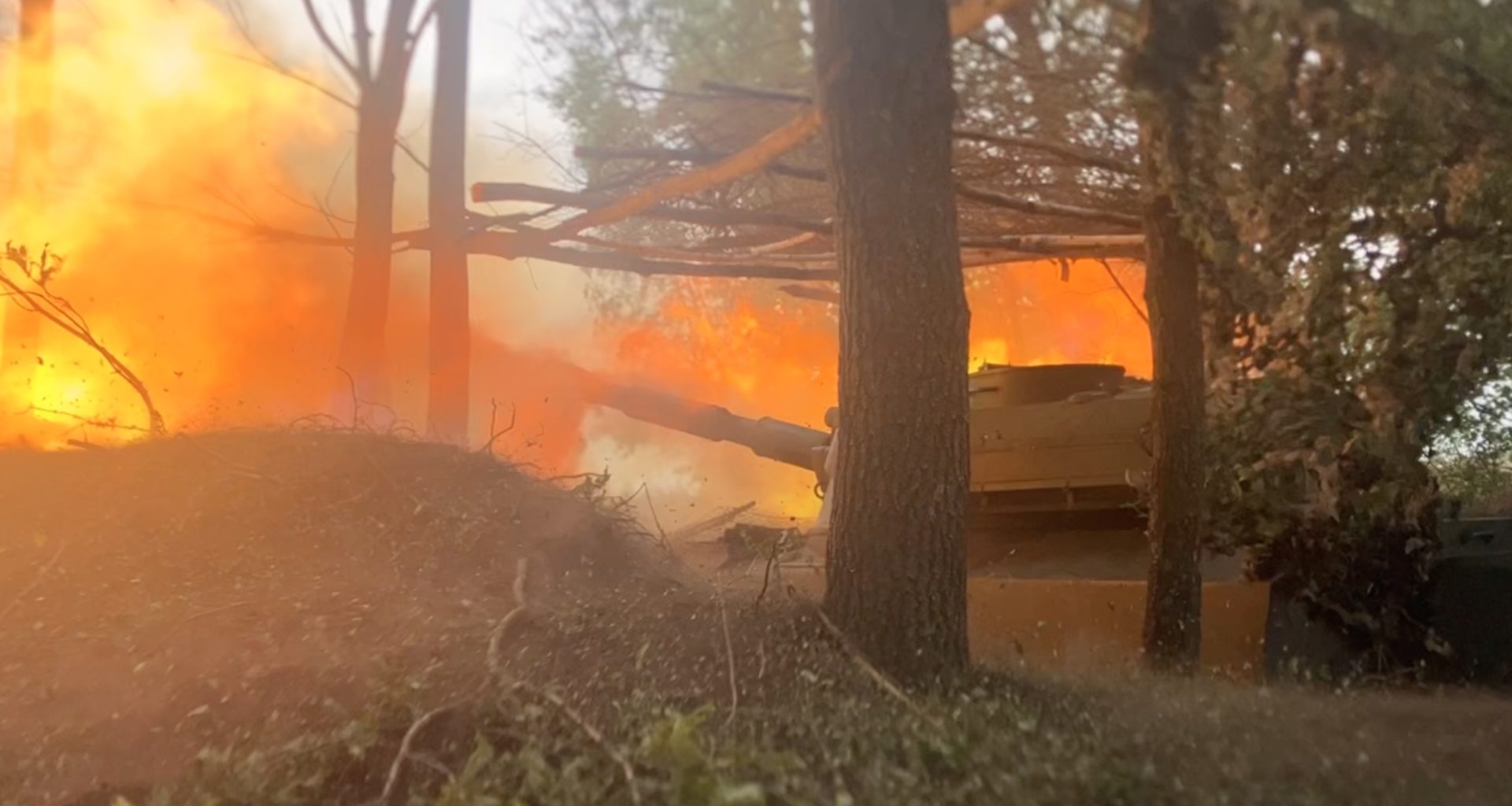Euromaidan Press visits an artillery unit at the frontline in the Kharkiv Oblast to provide insights into the current status of ammunition supplies, weaponry, and manpower. On 10 May 2024, Russian forces initiated a major offensive to establish a “sanitary zone” in the Kharkiv Oblast in northeastern Ukraine. Moscow started an armored ground attack with 30,000 troops in Belgorod, Russia. Russian strikes targeted Vovchansk with guided bombs and artillery. Ukraine deployed reinforcements, leading to intense clashes in border areas.
At 4 am, on a cloudy morning, our van drives through empty downtown Kharkiv to the frontline in Vovchansk direction, the hottest spot in Ukraine in the first week of summer 2024. A poster on the road flies by: a portrait of a soldier, caption, “He died for your freedom.”
As a part of its latest assault, Russia has relentlessly attacked the Kharkiv Oblast residential areas. Located only 40 km from the Russian border, the second largest city in the country, Kharkiv maintains a semblance of normality in the face of ongoing destruction. Small towns and villages closer to the Russian border face Russian “scorched earth” strategy. Vovchansk, a town located less than 5 km from the border, is near annihilation.
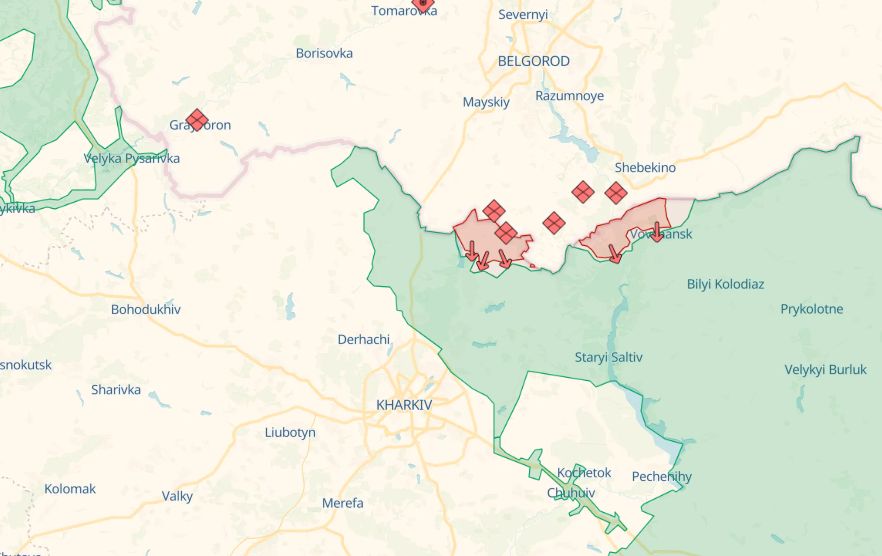
At a gas station, soldiers drink coffee and smoke, in silence. As the sun rises, faces look pale, tired but determined. The van is struggling over the bumps and holes left by the tanks and military vehicles, passing charred houses, abandoned villages, overturned cars, and the remains of a blown-up bridge. Pine forest is burned here and there. The van goes over a pontoon bridge, the wooden panes making knocking sounds. A deer jumps across the road.
We arrive at the positions of the anti-aircraft missile and artillery division platoon of the 57th motorized brigade deployed in the Vovchansk direction. The birds are chirping in tall trees.
Help us make more articles like these — become a patron.
Russians are employing a “meat storms” strategy, sending waves of infantry into assaults and suffering heavy casualties. The outcome of these assaults largely relies on Ukrainian artillery support for their own infantry and the ability to target the concentrations of the adversary’s manpower. Yet, the SAU 122-mm 2S1 Gvozdika self-propelled howitzer is almost half a century old.
Designed in the Soviet Union, ironically in Kharkiv, and produced in 1976, it is “tired,” says the platoon commander, call sign Michael. In his thirties, athletic and confident, Michael is friendly and eager to talk.
The distance from the front is never easy to define. Frontline is more of a general term: there is no actual line; it is really a gray zone. The howitzer has a maximum fire range of 15.4 km, which means that the Russians are 15 km away or closer within the fire range—perhaps 5-7 km, according to Michael.
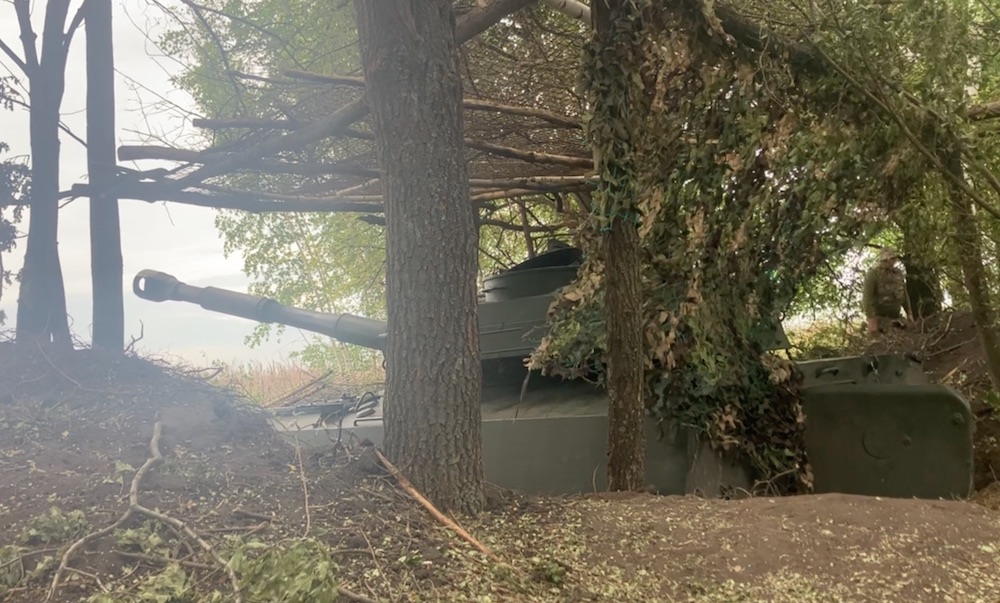
The howitzer is dug into the ground, covered with leafy branches, and is shielded by a green-brown camouflage net to protect it from aerial reconnaissance and kamikaze drones. Several rows of dark green shells shine in the sun on the grass next to it.
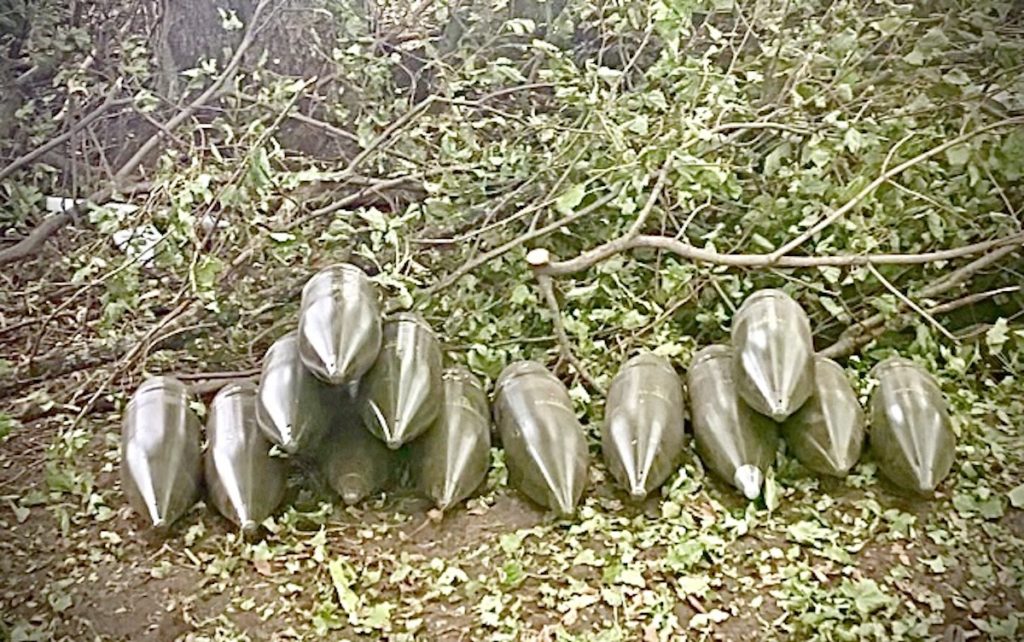
“American ammo,” says one of the soldiers.
Research, however, reveals fog of war: the ammunition might be delivered by the US but is produced and bought from other states that prefer to stay undisclosed. Provoking the Kremlin in 2024 is not on many countries’ agenda.
A pile of old, rusty Soviet ammunition across the lawn evokes World War II. The ammunition comes from around the Soviet bloc and was supplied to the Ukrainian army by the allies. Soldiers also recycle used brass cartridges to make DIY ammunition. In addition, Ukraine started producing shells, according to Michael.
While the supplies are satisfactory in this platoon at this time, Ukraine requires more precise and efficient modern weapons, such as 155 mm artillery. These would conserve shells by reducing the number needed per target from three or four to just one or two.
Two soldiers, equipped with binoculars, are watching out for drones by the side of posadka, the stripe of greenery. Orlans, Russian reconnaissance drones, are frequent guests here, almost always followed by Lancets, kamikaze drones, and sometimes FPV (First-Person View) drones carrying explosives. Remotely piloted aircraft are widely used by Russians and Ukrainians for reconnaissance, surveillance, and targeting, as well as for attacks.
To avoid the drone attacks, soldiers hide in a dugout and under the trees for hours. Unlike dugouts on other positions, this one doesn’t have bunk beds or a generator, just one wide platform that fits three people in a dark hole in the ground.
Ukrainians have also invented other ways of air defense: a small box with an enticing name Tsukorok, Sugar Cube, is taped to the tree. The device catches the frequency waves of drones in a 3 km radius.
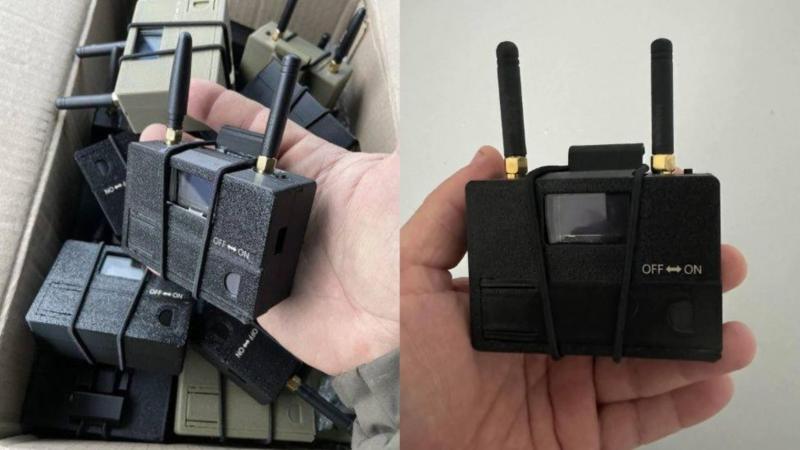
“This electronic warfare asset does not emit any signals,” explains Michael. “It monitors, analyzes, and intercepts communication channels of Russian drones, including Lancets, Orlans, and other models. This thing is indispensable. We need at least one device per vehicle and one per combat unit.”
If drones could be intercepted and downed, not much can be done when Russians launch KABs (aerial guided bombs).
These bombs evade Ukrainian air defense systems. Only Western-supplied long-range precision weaponry can effectively neutralize the aircraft launching these KABs and missiles.
According to Michael, HIMARS (High Mobility Artillery Rocket System) and ATACMS (Army Tactical Missile System) are needed to target the conglomeration of Russian military equipment and troops at the border to prevent them from advancing and preparing assaults.
“Better to kill the Archer instead of trying to stop all the Arrows,” wrote Ben Hodges, former Commanding General (CG) of the US Army Europe.
Apart from drones and KABs, artillery presents a constant risk. Just a day before, an artillery shell hit 20 meters from the positions. With the danger in the air, the soldiers appear to be carefree and upbeat, even as they open up about hardship.
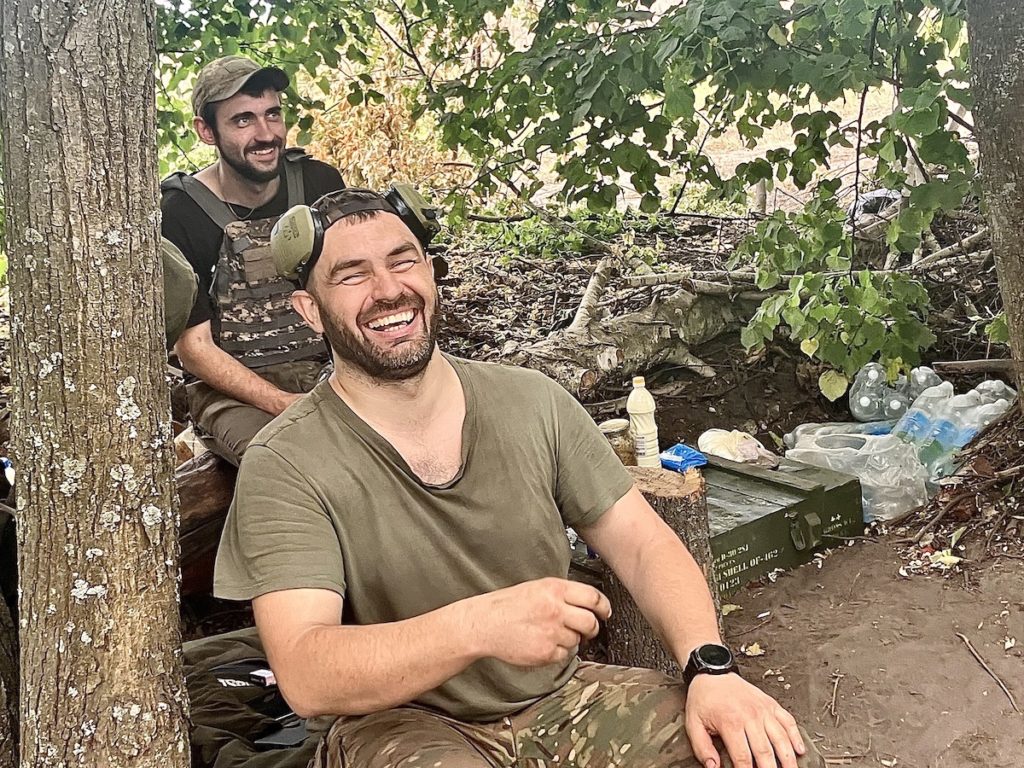
“We have stopped the adversary in Vovchansk. They are not advancing at the moment,” says Kuzya, a soldier in his early 20s with a round face, light beard, and a broad smile. “And we have ammunition. Yet, the situation is tense. The enemy is building up their troops. Our guys are tired, need a break, and want to visit families. It’s the third year already. There are days and nights when it’s hard, and we want to rest.”
57th separate motorized infantry brigade has been fighting for ten years, formed on the basis of three volunteer territorial defense battalions in 2014, a few months after the start of the Russian aggression in Donbas. Since the start of the Russian full-scale invasion in 2022, the brigade has taken part in the battles for Sievierodonetsk and Avdiivka and got an award for the liberation of the Kherson Oblast. Most soldiers have been here since at least February 2022; some since 2014.
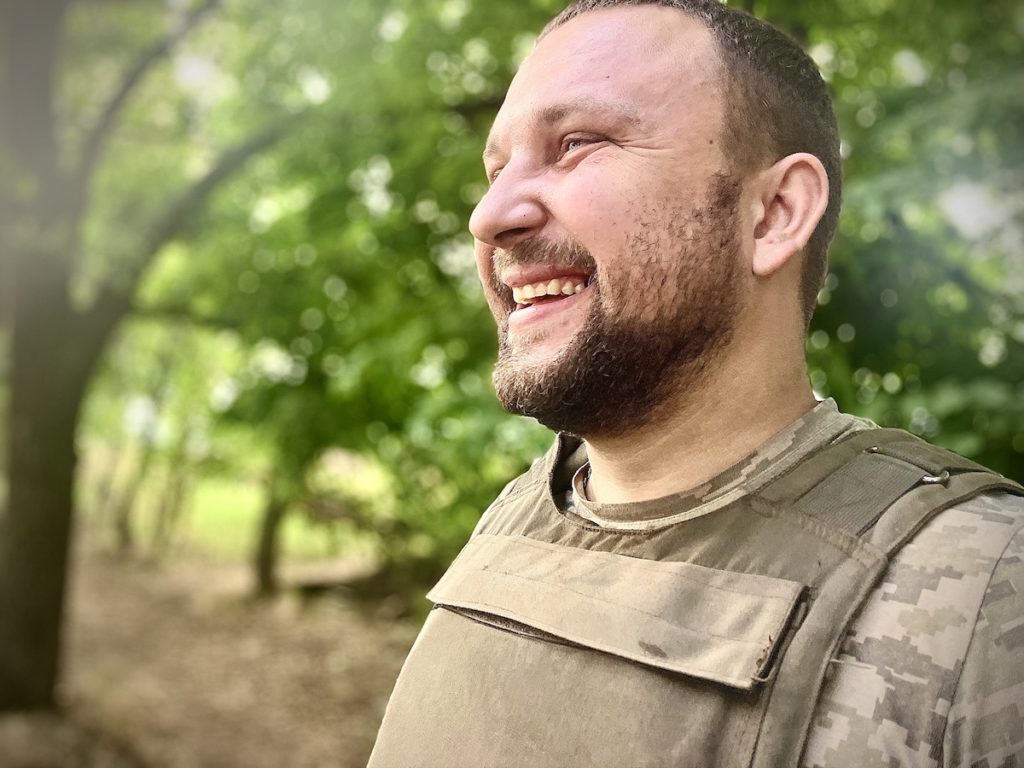
Kuzya smiles, “We might be tired, but, most importantly, we need weapons and ammo.”
Michael confirms, “Infantry and assault brigades need people, but we are doing fine with personnel. The morale is high. If Russians succeed in Ukraine they will move on to Europe and target other countries. We must stop them.”
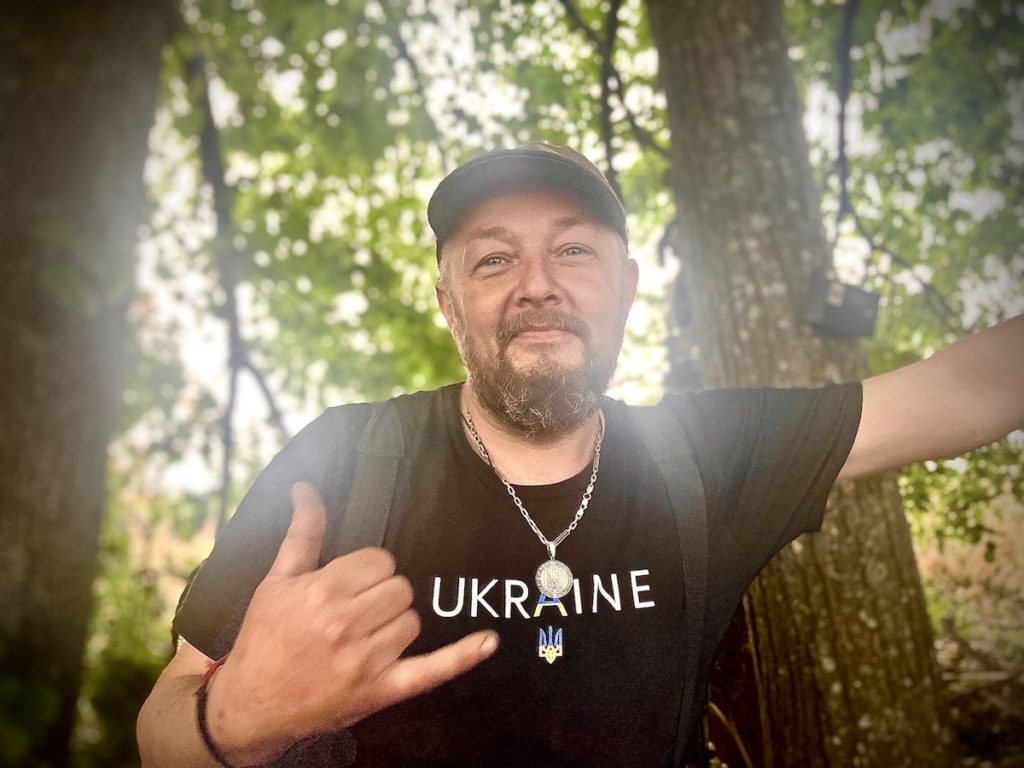
Mykola, 45, with piercing blue eyes and contagious laughter, starts a debate about the Budapest agreement, nuclear weapons, and the situation in the US and worldwide. He turns everything into a joke. Sitting on the grass around an improvised table made of a tree stump, with a bottle of milk and a glass jar of kasha, the platoon roars with laughter.

A soldier with a call sign Shkodnyk (Rascal), in his early 40s, picks up a big bug from the ground, holds it in his palm, then carefully places the insect on the tree trunk right next to the drone-catching device, his brown eyes shining with the joy of a nine-year-old.
“We need radio stations and kits CHIMERA (Counter-Electronic High-Power Microwave Extended-Range Air Base Defense) to locate the adversary and protect units from medium to long-range airborne threats. Our units with HIMARS get them. And, we also need to use a shower. Have been here for two weeks already. Check out our shower.”
He points at a young soldier washing his hands from a makeshift sink: a water-filled Coca-Cola plastic bottle turned upside down and taped to the tree trunk. He then shows a platoon chevron: Gods of War, a name often applied to artillery.
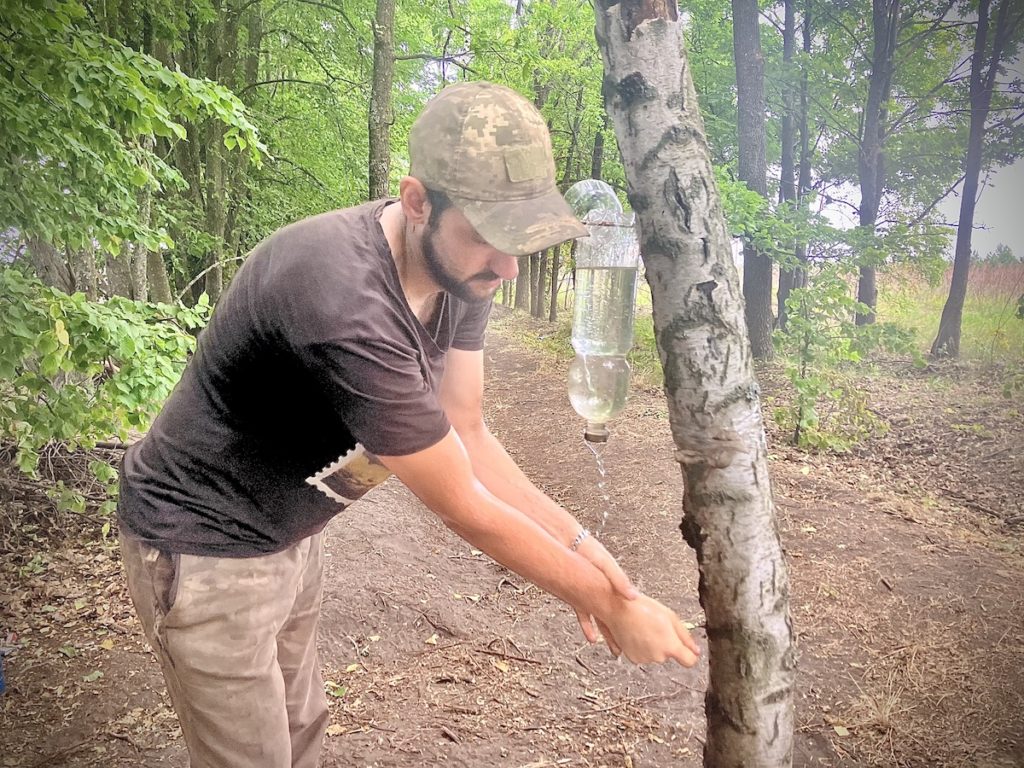
“Some gods of War.”
“Ukrainian gods of War,” laughs Mykola.
The field radio is on.
“Guys, fire!” shouts Michael.
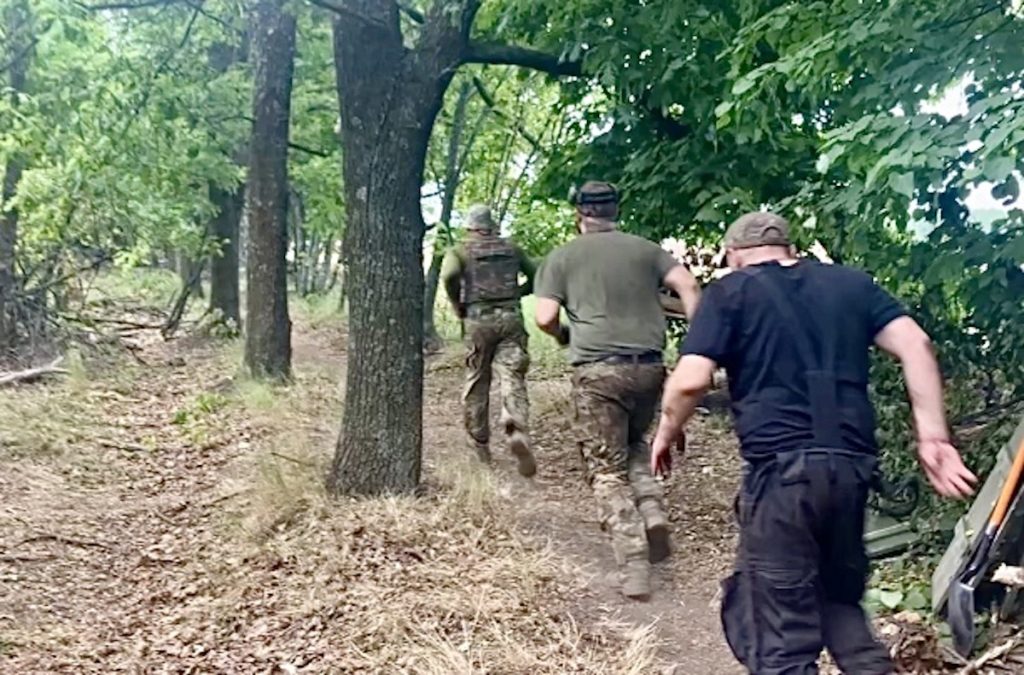
Five men are running to the weapon along a narrow path. Kuzya climbs on top and jumps inside, Mykola and another soldier are loading ammunition. The turret starts moving. Gvozdika fires. The air fills with smoke and dust. The first two or three shots are a trial. The last one should hit the target.
Back to the main hangout, everyone is relaxed, talking at once, laughing, joking, to the distant sounds of outgoing and incoming artillery. Soon, an incoming artillery shell blows up nearby. Shkodnyk rescues another bug from being stepped at. In two hours, the unit fires three times.

The enemy drones are circling around as our van leaves the positions.
Two hours after our visit, the howitzer barrel blows up during firing. Luckily, no one gets hurt, and the report comes that the morale is still high. According to several military experts, it happens due to barrel wear—hardly surprising, especially as the weapon is fifty years old.
“Even if we run out of weapons, we will fight with shovels,” Ukraine’s foreign minister Dmytro Kuleba said in January 2024. “Because what is at stake here for Ukraine is the existence of this nation.”
On 8 June, President Volodymyr Zelensky said that Russian troops failed their Kharkiv Oblast offensive.
Yet, morale and shovels would not suffice to save Ukraine and stop the Russian advance in Europe. Ukraine needs modern weapons.
Related:
- Ukraine now has drones rescuing fallen drones from hazardous battlefields
- Ukraine’s plan B: turning everyday citizens into defenders
- Ukrainian soldiers hold back Russian onslaught with scavenged 1950s howitzer, DIY shells

